If there was ever a time when a group of people said “enough is enough,” it was definitely during the Stonewall riots in the US. In the Netherlands, a similar sentiment followed in 1979 during Roze Zaterdag (Pink Saturday.)
Let’s run through a short history of gay rights in the US and Netherlands, and how they interconnect in celebration of Pride in Amsterdam.
To begin, let’s start with the Stonewall riots.
The riots were much more than a fight, they ignited a spirit that gave purpose to many in the LGBTQIA+ community to not only fight for the right to love and unapologetically be themselves but also inspire others to do the same.
So what were they?
The Stonewall riots
It was early in the morning of June 28, 1969, when the police raided the Stonewall Inn to make their usual arrests of its gay patrons.
They often enjoyed intimidating and arresting the bar’s patrons — but on this particular day, the crowd became fed up and refused to be intimidated.
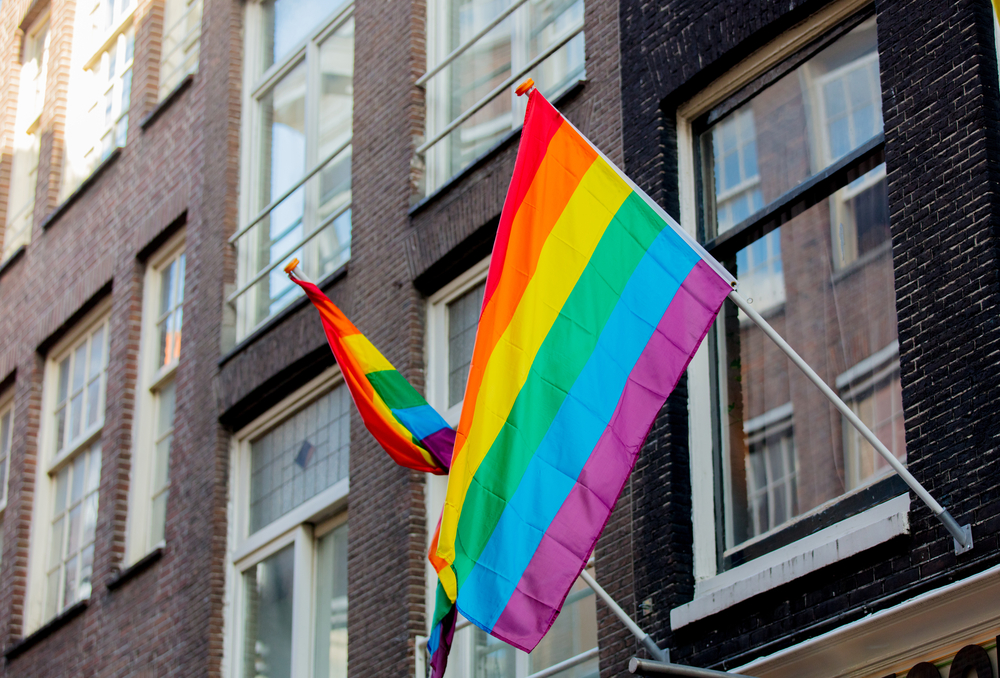
On the 52nd anniversary of the Stonewall riots, we take a trip down memory lane to remember this important part of history, and how it came to inspire something beautiful all over the world, especially in the Netherlands.
The years before Stonewall
The 1950s were a low point for the US when it came to protecting the rights of its citizens, be they Black or Queer.
For example, it was at this time that the American Psychiatric Association’s diagnostic manual listed homosexuality as a sociopathic personality disturbance, President Dwight D.
Eisenhower signed an executive order that would ban homosexuals from working for the federal government, saying they were a security risk, and the police arrested and molested them with impunity.
Gays and lesbians were effectively outlaws, living in secrecy and fear.
The Stonewall Inn
At the time before the riots, many Queer people never had the illusion that living according to societal norms and standards would improve their situation, nor did they have the option to try.
The only places where they could openly be themselves were gay and lesbian bars and the Stonewall Inn provided a safe haven for so many in the community.
The Stonewall was one of the few gay bars in Greenwich Village where patrons could dance, drink and be themselves, even if for a while.
It attracted a diverse, young clientele, although only a small number of lesbians. Some patrons dressed in various forms of drag, including “scare drag”, as well as other types of attires.
Those who ran the inn often had to bribe police officers to look the other way, thereby, protecting not only their business but also to some extent the visitors.
Cops who were bribed had to notify the inn in advance when they came for their raids. That way, patrons could usually get away just before the police arrived.
The riots
Police raids on gay bars were nothing new at the time.
These were mostly used as intimidation tactics where patrons often had to identify themselves, were beaten up, and if they wore clothes that were not “appropriate” for their gender, they were arrested.
Normally, the cops responsible for the Stonewall Inn area often turned a blind eye in exchange for bribes, but on the evenings of June 27 and 28, the police came from another district.
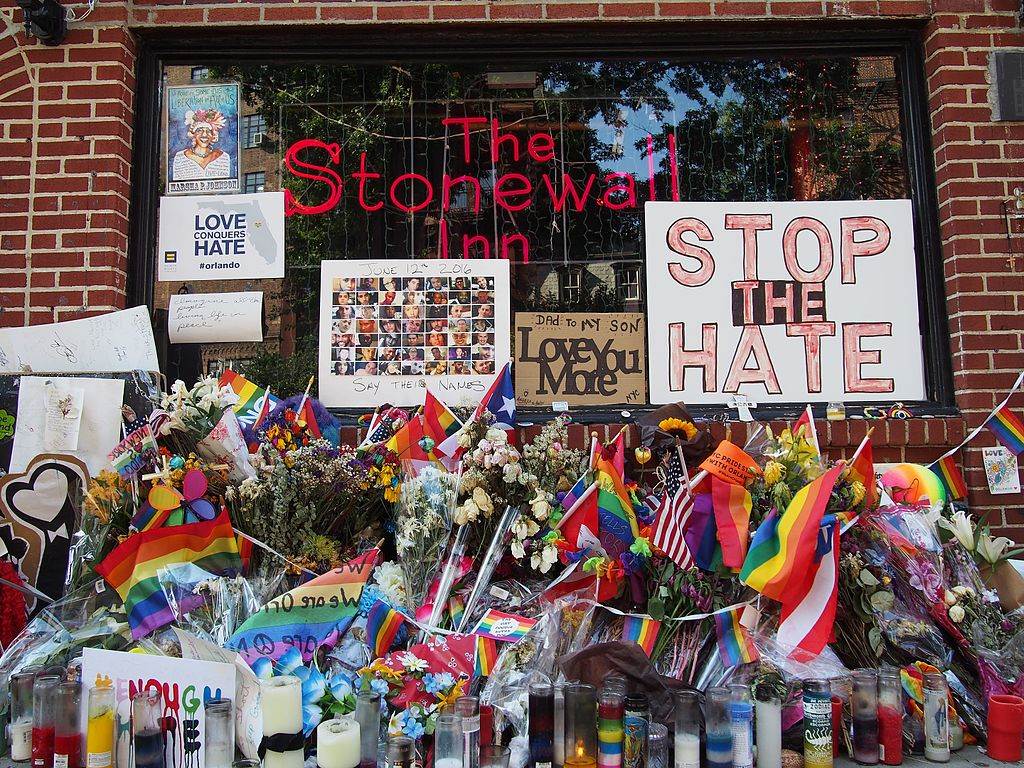
The inn had not been tipped off in advance and was fully packed as a result.
About six officers — including those who led the NYPD’s public morals division — went into the bar, where undercover colleagues were already inside.
There is no film or video footage of the Stonewall uprising.
There is one photo from the first night taken by Joseph Ambrosini, a Daily News photographer, and four photos of Stonewall uprising participants from the second night taken by Fred W. McDarrah, a Village Voice photographer.
Eyewitness accounts report that when the police walked in, the music stopped and the lights were turned on as they instructed patrons to show their IDs on their way out.
Some of the lesbian customers were harassed and bullied by male police officers inside the bar.
The last straw was when a lesbian patron who came out of the bar was manhandled by police as they tried to force her into a car.
There was a scuffle with the police, stones and later Molotov cocktails were thrown at their cars, and the more the police tried to intimidate them, the more things escalated.
The approximately 2,000 protesters who gathered could not even be stopped by the Mobile Unit.
The next day activists stood in the street handing out pamphlets. They called on people to gather in front of the Stonewall Inn later that night.
The call was answered en masse and the crowd that night was even bigger than the night before and later in the same week, more people mobilised and started the riots again.
The aftermath
In the aftermath of the riots, a large group of those involved formed the Gay Liberation Front, an organisation dedicated to decriminalising homosexuality in the US.
According to Come Out! Magazine, the first periodical published by the gay and lesbian community after the Stonewall riots in June 1969, “The Gay Liberation Front is a coalition of radical and revolutionary homosexual men and women committed to fight the oppression of the homosexual as a minority group, and to demand the right to the self-determination of our own bodies.”
Dozens of similar organisations sprang up as more and more spontaneous marches started taking place all over the country. For example, in July a Gay Power rally took place in Washington Square Park in New York.
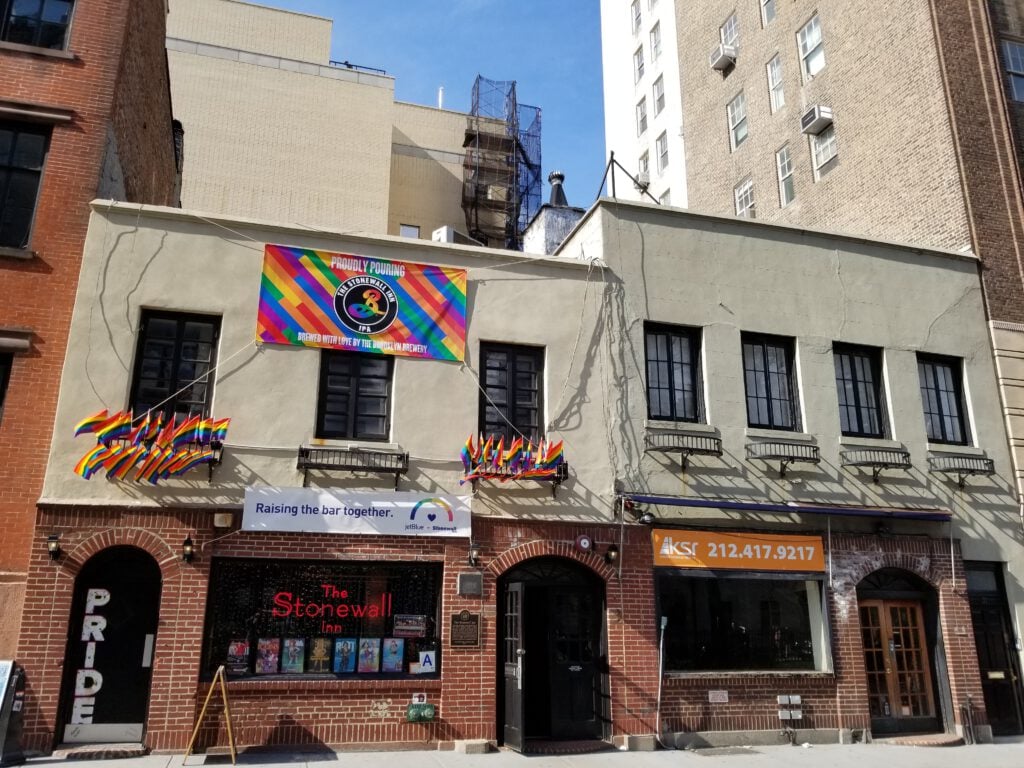
Ultimately, this activism led to the first Gay Prides being held on June 28, 1970, in New York, Los Angeles, and Chicago. The march in NYC took place on Christopher Street, across the street from the Stonewall Inn.
Although the struggle for LGBTQIA+ rights did not actually begin at Stonewall, the uprising was a key turning point and a catalyst for explosive growth in a movement that would eventually spread all over the US and other parts of the world (including the Netherlands).
From Stonewall riots to Gay Prides
The Stonewall riots gave rise to the birth of hundreds of gay organisations all over America in a short period of time.
The Gay Liberation Front (GLF) which was founded after the uprising decided in November 1969 to commemorate the Stonewall riots under the name Christopher Street Liberation Day.
Christopher Street is the name of the street where the Stonewall Inn is located.
On the first Christopher Street Liberation Day in New York (exactly one year after the Stonewall uprising), an estimated 3,000 to 15,000 people began marching at Greenwich Village and went 51 blocks up Sixth Avenue to Central Park.
The energy would soon spread to other American cities, and eventually to London, Paris, West Berlin, and Stockholm.
Today, Gay Pride Parades that were inspired by the first Christopher Street Liberation Day take place worldwide.
Pride in the Netherlands
Despite its name, Amsterdam Pride has a different origin than many Gay Prides in other parts of the world.
These often commemorate the Stonewall riots, but in the Netherlands, Pride doesn’t just commemorate the Stonewall riots but also an event called Roze Zaterdag (Pink Saturday).
Pink Saturday (Roze Zaterdag)
Pink Saturday is the Dutch version of the Gay Pride Parade, which was held for the first time on June 25 and nowadays annually in every city.
The event was given the name “Pink Saturday” by ROZA an activist group from Limburg.
The name traces its origins to a demonstration organised by ROZA on April 14, 1979, in Roermond following some bigoted statements by bishop Gijsen about homosexuality in an interview with Elsevier magazine in January 1979.
The bishop had said some nasty and hateful things about homosexuality and none of that was going to be tolerated by activist groups and/or the LBGTQIA+ community. So they demonstrated.
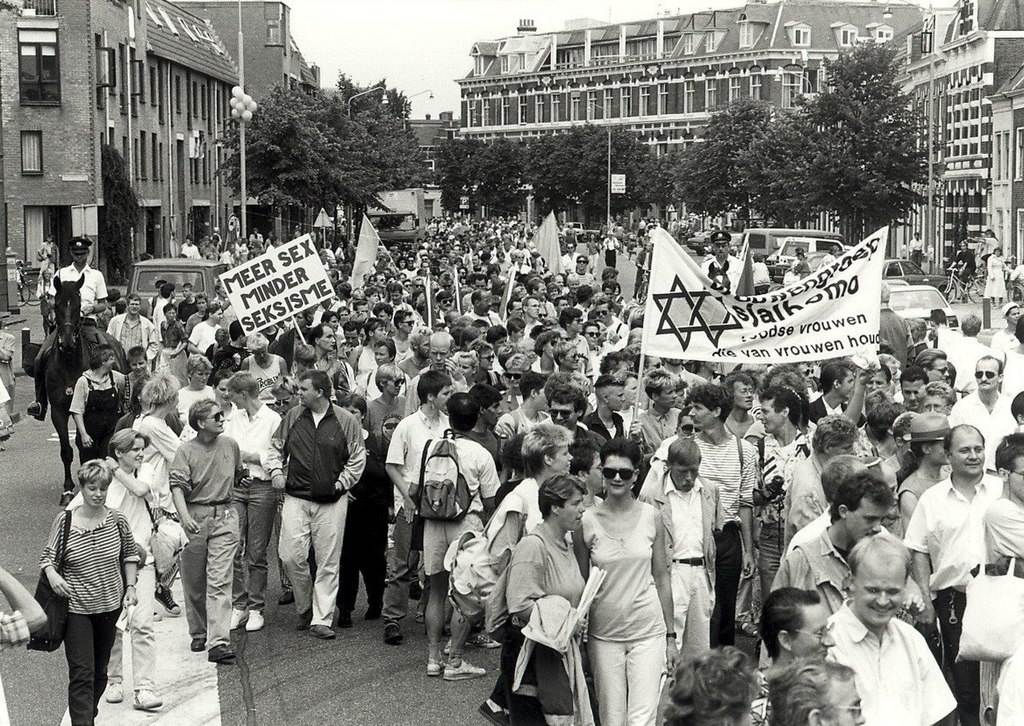
Pink Saturday in Amersfoort in 1982 is remembered to be one of the darkest episodes in Dutch history.
What was supposed to be a festive day turned into riots as the three parades with gays, lesbians, and friends marching towards the city centre were threatened, spat on, and pelted with onions and eggs.
Several attendees were seriously injured, with some young people from the neighbourhood attacking the parades while also searching for a fight.
Amateur videographer and gay rights activist Rob de Vries recorded the parades and the mayhem and this video can be found on NPO.
It gives a glimpse of the hatred that the LGBTQIA+ community had to endure in the Netherlands at the time.
Celebrated together in June
Pink Saturday is traditionally organised at the end of June every year because of the connection with the Stonewall riots.
The event creates an avenue for celebration, demonstration, and emancipation, while also offering space for information, discussions, parties, meetings, and visibility for sexual and gender diversity.
It is also a reminder that there was once a time when the Netherlands was not so accepting of the LGBTQIA+ community.
While things may be somewhat better now, there is still a lot of work to be done concerning acceptance and rights for the gay, lesbian, transgender, queer and intersex communities in the Netherlands.
Pride Amsterdam
Pride Amsterdam was first held in 1996.
The highlight of this festive day is the Canal Parade, which is held every year on the first Saturday of August (except in 2020 due to the coronavirus pandemic and lockdown).
This is an eccentric boat procession through the canals of Amsterdam.
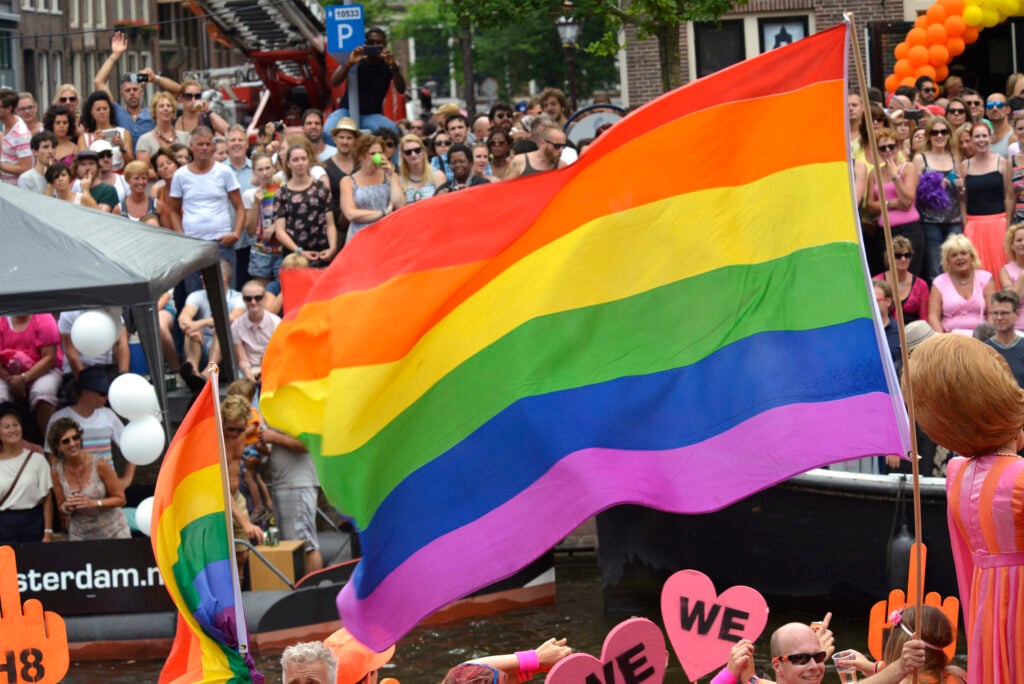
Pride Amsterdam started purely as a party. It was and still is, a celebration of marginalised sexual orientations and identities.
The first boat parade in 1996 attracted about 25,000 visitors. Today, the event attracts hundreds of thousands of people every year, with a record 560,000 attendees in 2016.
Pride Amsterdam is one of the most beautiful things about the Netherlands.
It is not just a celebration of love, expression, marginalised sexual orientations, and identities, it also remembers those who dared to stand up for their rights and the rights of others during the Roze Zaterdag and the Stonewall riots.
Finally …
In 1960s America, gays and lesbians were seen as nothing but outlaws and had no choice but to live in secrecy and fear.
They were labelled insane by doctors, immoral by religious leaders, unemployable by business owners, and liability by the government.
It was a period when society saw homosexuals as predators and child molesters, the police saw them as criminals while constantly preying on them because they were easy targets that society didn’t care for.
Stonewall electrified the push for gay equality and every year as Pride is celebrated in the Netherlands, we all remember the activists who gave blood, sweat, and tears for the LGBTQIA+ community of today to dream big.
Did you know the history behind Pride in Amsterdam? Tell us your thoughts in the comments below!





That you only read English does not mean the Netherlands history is anything like the American history. The gays who were accepted in their cities in 1982 wanted to march through a working class neighbourhood in the bible belt, because they wanted a confrontation and there wasn’t enough to confront where they lived. They got the confrontation the organizers aimed for. So no, that’s not “a glimpse of the hatred the then LGB-community had to endure” but the hate they were searching for and managed to find with this effort.
“While things may be somewhat better now, there is still a lot of work to be done with regards to acceptance and rights for the gay, lesbian, transgender, queer and intersex communities in the Netherlands.” Thing are certainly not somewhat better, they are much better with the people of Amersfoort but are worse in terms of safety for gays in Amsterdam who are not looking for confrontation. A gay couple emigrated to the Hungarian countryside feel safer there than in Amsterdam. There is no issue with rights at all o but their is a huge issue with the acceptance and even tolerance of the Amsterdammers, who for more than half have an immigration background by now. Write abou that if you dare instead of projecting foreign backwardness on the Dutch.
Yes, the age-old excuse of gay-bashers everywhere. “They were asking for it”
The fact of the matter is that those LGBTQIA+-people had every right to be there as themselves, and that the Christian Reformed Hyena’s on Mopeds who attacked them had no right to do so. It doesn’t even matter if the pride march was intended to be a provocation or not. Provocation is in essence protected speech, after all, and you strike me as one of those staunch defenders of “Het Vrije Woord™” lol. Personally I don’t think it was intended to be a provocation at all, believe me, we had more important things to do at the time than trolling “Zwartekousen” at the time. Apparently people like them (and apparently you) feel entitled to have a say in how LGBTOIA+-people should behave and/or live their lives.
Also, as a Dutch gay male, I don’t appreciate to be spoken for by someone who justifies violence against LGBTQIA+people when Christians do it, and at the same time condemns the exact same violence when it makes for an convenient stick to bash people with a certain religious/immigrant background with.